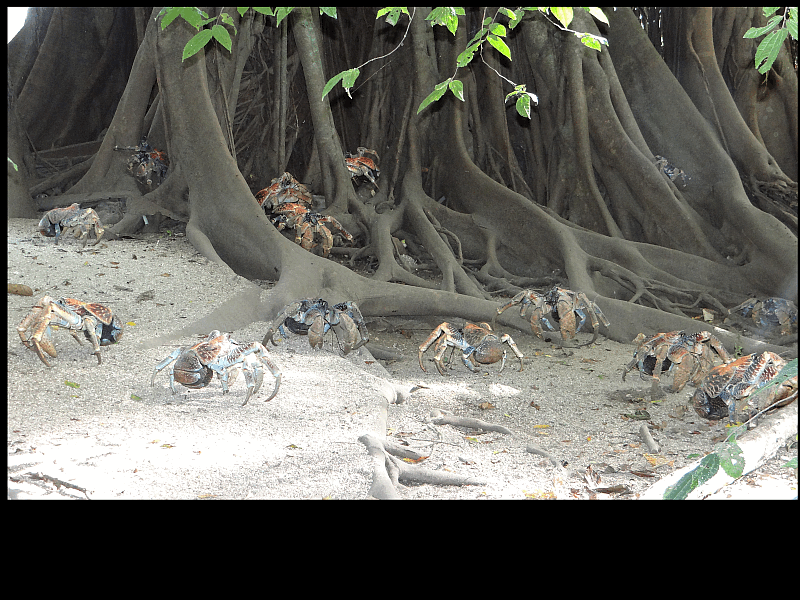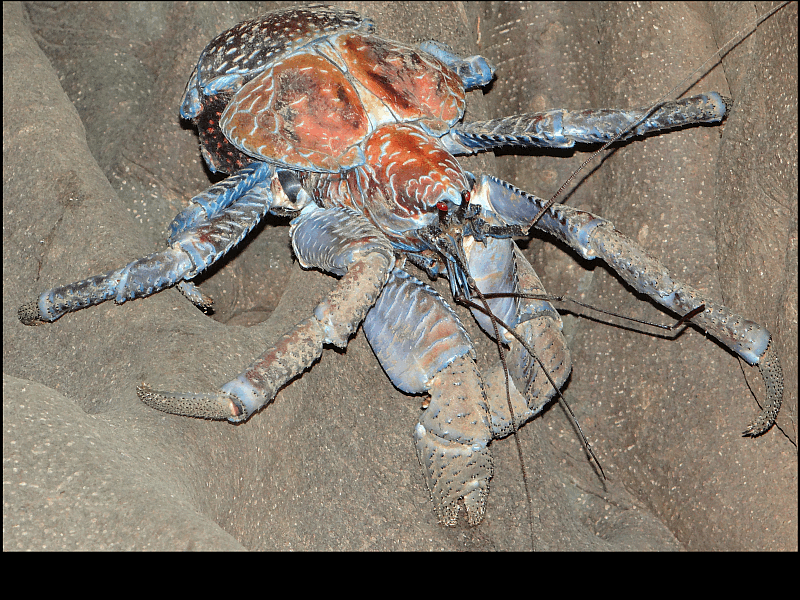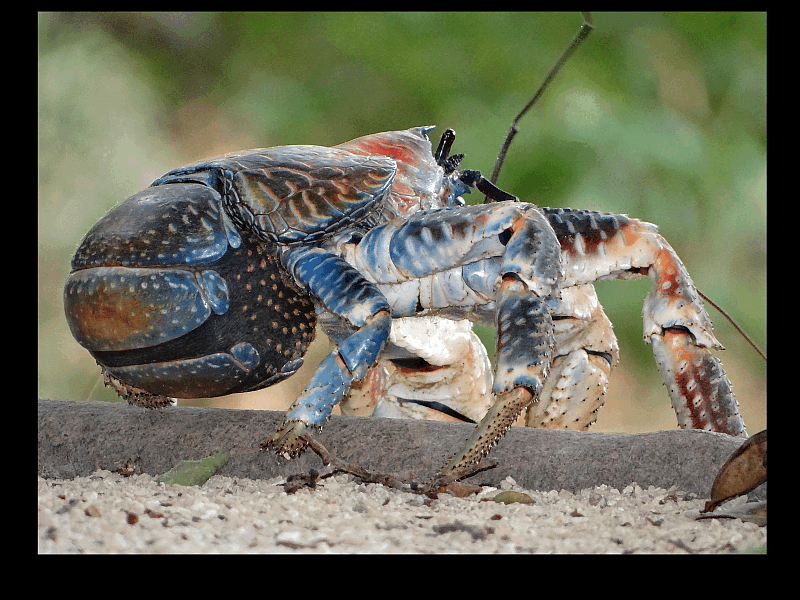
Crabs of Christmas Island




Robber crab
Infra-order Anomura, Family Coenobitidae
On land, the Anomura are represented principally by the Coenobitidae which include 16 species of shell-carrying terrestrial hermit-crabs (Coenobita) and the robber or coconut crab Birgus latro, the largest terrestrial arthropod.
An abdomen which is clearly visible and distinct from the cephalothorax is a morphological feature of anomuran crabs.
The robber crab is the only species in the genus Birgus and also the crab to have best evolved to life away from the sea or freshwater.
Robber crab | Birgus latro (Linnaeus, 1767)

The robber crab is a close relative of land hermit crabs and the only species in the genus 'Birgus'. They are able to grow to relatively gigantic proportions and are probably the largest terrestrial arthropod on earth. The largest specimens can weigh up to 4 kg, have a body length of up to 400mm and a leg span of around 800mm.
On Christmas Island the crab's body color varies from light violet to deep purple, purplish-blue or orange-red to brown. Their color is not related to age or sex and a crab retains its coloration for its entire life. Recent research is showing that individual crabs have distinguishing body markings that are retained through moults for the duration of their life.
Is found all over the island in uneven population densities in all of the available habitat types apart from those areas cleared for mining. Christmas Island is considered to have the largest and best protected population of the species in the world and represents one of the species' major sanctuaries although It is only provided partial protection.
A crab under threat
Robber crab numbers across the island were severely reduced, and completely wiped out in some areas, in the late 1990s by invasions of the exotic yellow crazy ant. An ongoing island wide ant poisoning program has reduced yellow crazy ant population densities, and robber crabs, and land crabs generally, have been able to progressively repopulate areas they were exterminated from by the ant.
Birgus latro was listed as globally vulnerable in 1981 under the IUCN Red List and, although their status was changed in 1996 to "data deficient". This was not because populations had recovered, but simply because of the lack of reliable data on their biology and distribution. Once widespread through the tropics, robber crabs are today almost exclusively found on islands. Sadly, populations continue to decline as a result of harvesting for food, habitat loss, interaction with humans and the impact of introduced predators on young crabs.
Importantly, the Christmas Island population is genetically distinct from the western Pacific robber crabs, and thus an especial conservation priority. Unfortunately, the building of an immigration detention centre on the island has caused an additional and serious threat to the island's robber crab population.
A major increase in traffic on roads through high population areas of robber crabs has lead to a dramatic increase in the number of robber crabs being killed by vehicles on the island's roads.
****From January 2010 to the end of May 2016, more than 3,700 ... yes! - MORE THAN THREE THOUSAND SEVEN HUNDRED! robber crabs have been killed by vehicles on Christmas Island roads, the vast majority of these being on the access route to the Immigration Detention Centre and on roads used for phosphate mine haulage operations.
Another 81 robber crabs were killed during May 2016.
More robber crabs have been recorded slaughtered on island roads during 2016 than were slaughtered in 2015 - the carnage is actually increasing despite the scaling back of detention centre operations - this cannot surely be acceptable - how long will it take for responsible management authorities to take some tangible actions to reduce the carnage of these magnificent crustaceans****.
The careless carnage of robber crabs on Christmas Island roads cannot be allowed to go on - this level of killing will over time reduce the island's robber crab population to a level that is beyond recovery!
Only good science and sound management together with a substantial dose of human wisdom, will ensure these wonderful crabs can survive into the far future.



















Much more detailed and specific information on robber crab physiology, biology, and their slaughter on island roads, with accompanying images, is presented in the book
"Crabs of Christmas Island" by Max Orchard
